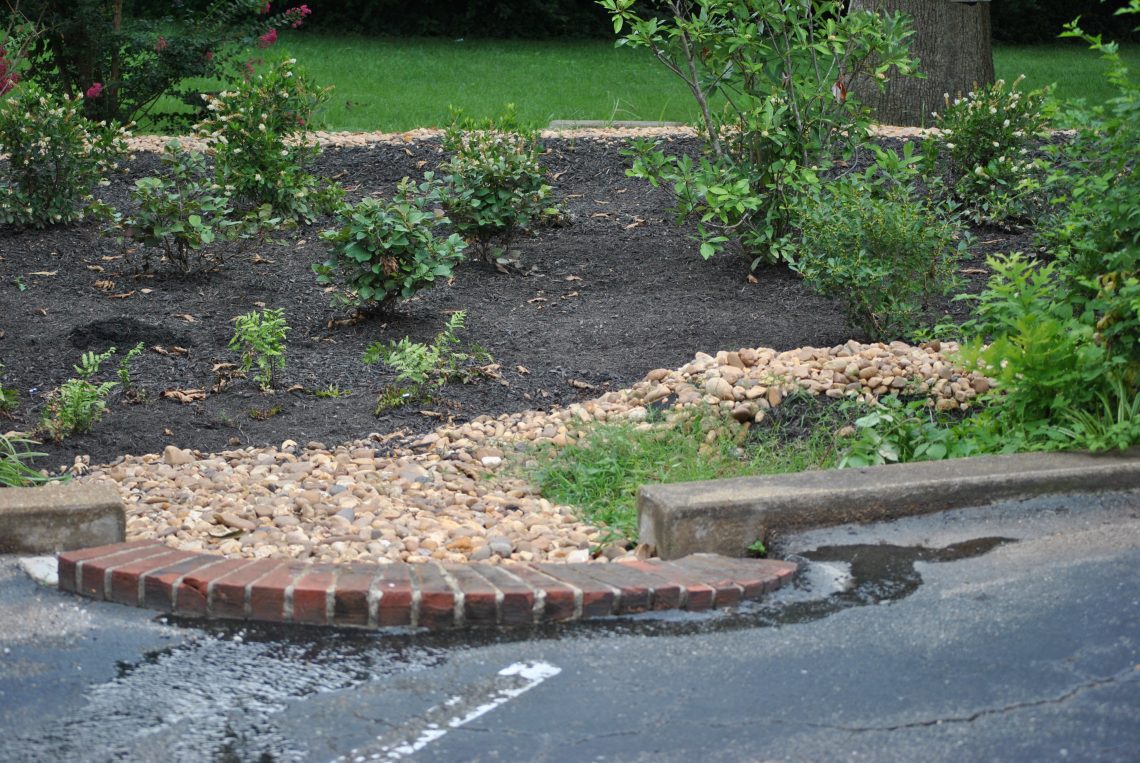Best Management Practices
Section 2.1: Residential Stormwater BMPs
In the years to come, Stormwater Best Management Practices (BMPs) on individual residential lots will become more commonplace and crucial weapons in the arsenals of stormwater practitioners everywhere. These BMPs will be instrumental in achieving water quality goals. They may be just as important as a way to connect the public to their local streams and the Chesapeake Bay, demonstrating that anyone can make a difference and, if we are to make a difference, it will take action from everyone.
There are many reasons one might install a BMP on an individual residential lot. One reason is that regulatory requirements for new construction often require BMPs to treat stormwater following land development. As time goes by, regulations are focusing more and more on treating stormwater locally, in micro-watersheds, instead of consolidating stormwater and treating it in a massive detention or retention stormwater management pond. A second reason is to install one or more retrofit BMPs [i.e., install a BMP(s) on an existing established residential lot where stormwater previously was not addressed]. This may be done to meet Municipal Separate Storm Sewer System (MS4) requirements, improve water quality in a local waterway, or as a volunteer citizen stewardship effort.
The following is a list of stormwater BMPs that are appropriate for residential use:
- Rain barrels (or rainwater harvesting)
- Rain gardens
- Permeable hardscapes
- Downspout disconnection
- Impervious cover removal and conversion to conservation landscaping
- Tree plantings
- Conservation landscaping (i.e. BayScapes)
- Urban nutrient management plan
- Infiltration trench
Section 2.2: Selecting BMPs for your Program
Stormwater BMPs can be as simple as planting a tree or as complicated as installing a permeable pavement system. It is crucial to remember that
homeowners will be maintaining these BMP’s over the years, not contractors who specialize in stormwater management maintenance practices. In order to have a successful residential BMP, it must
be correctly located, designed, and installed, and proper maintenance must be conducted over the life of the BMP. The first step in designing an effective non-regulatory BMP program is selecting the BMPs to be included in the program.
Section 2.3: Overview of Common Residential BMPs
There are a number of residential BMPs being used throughout the Bay watershed. For the Chesapeake RiverWise Communities program, we have focused on the following: rain gardens, tree plantings, permeable hardscapes, rainwater harvesting, and BayScapes (i.e. conservation landscaping). For details on design, installation, and maintenance,
you can refer to the Center for Watershed Protection’s “Residential Stormwater BMP Design Manual”. Additional information and sources on
many of these BMPs can be found in our Structural BMPs section.
